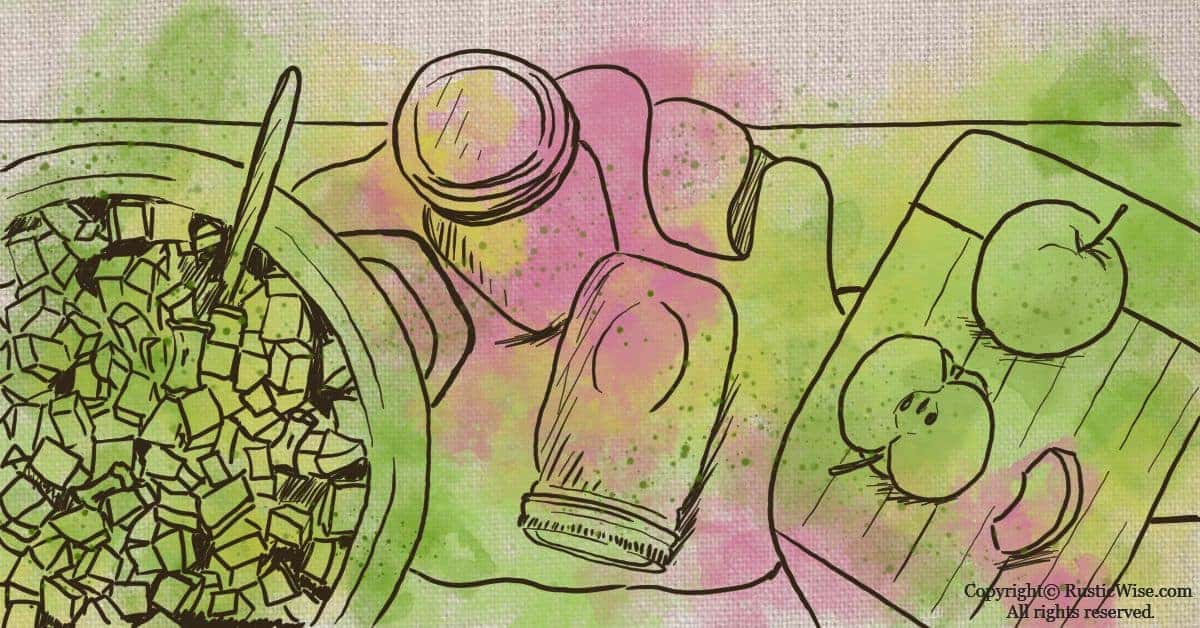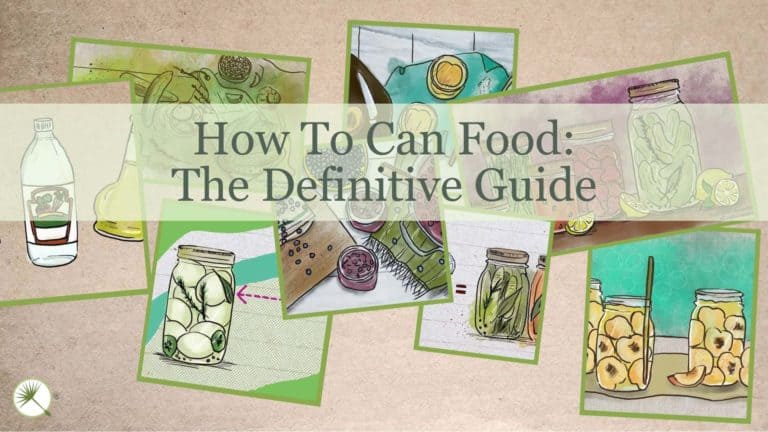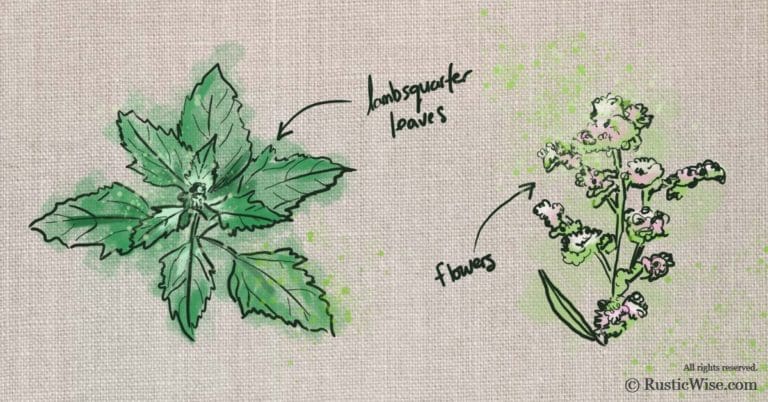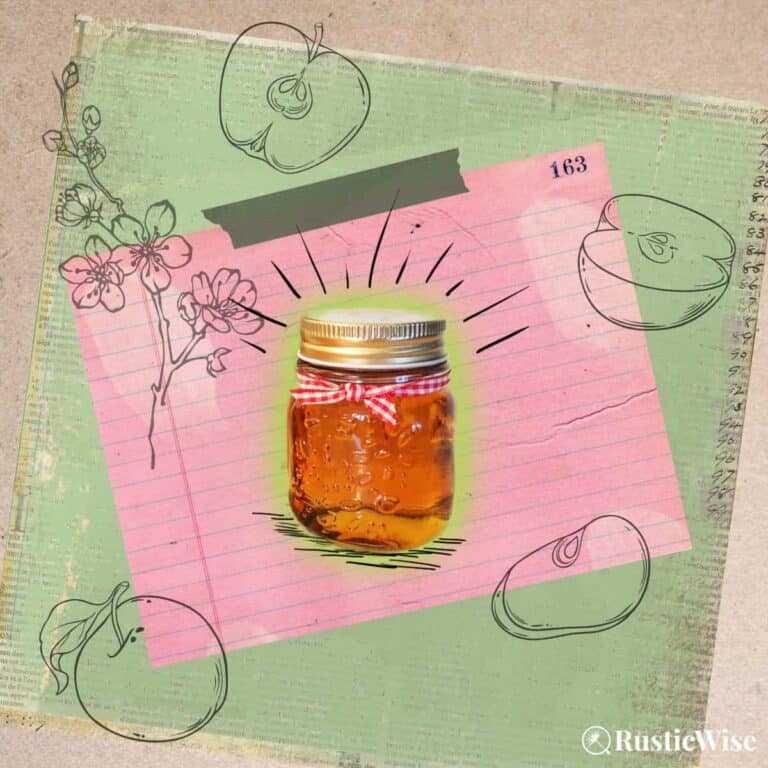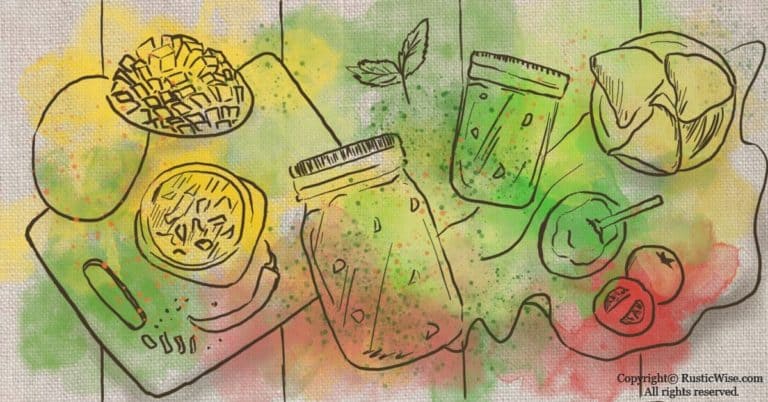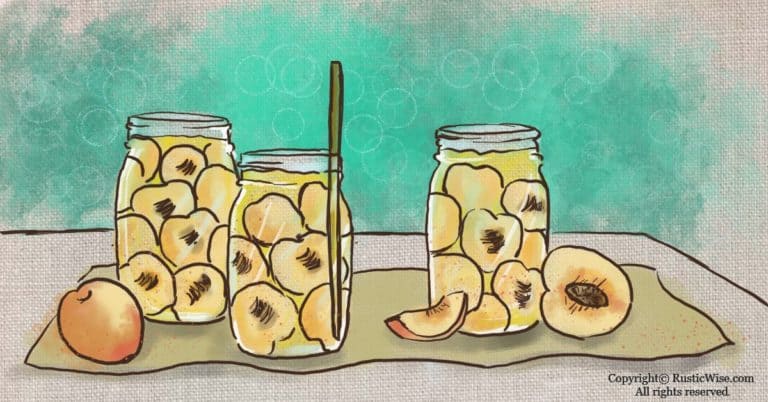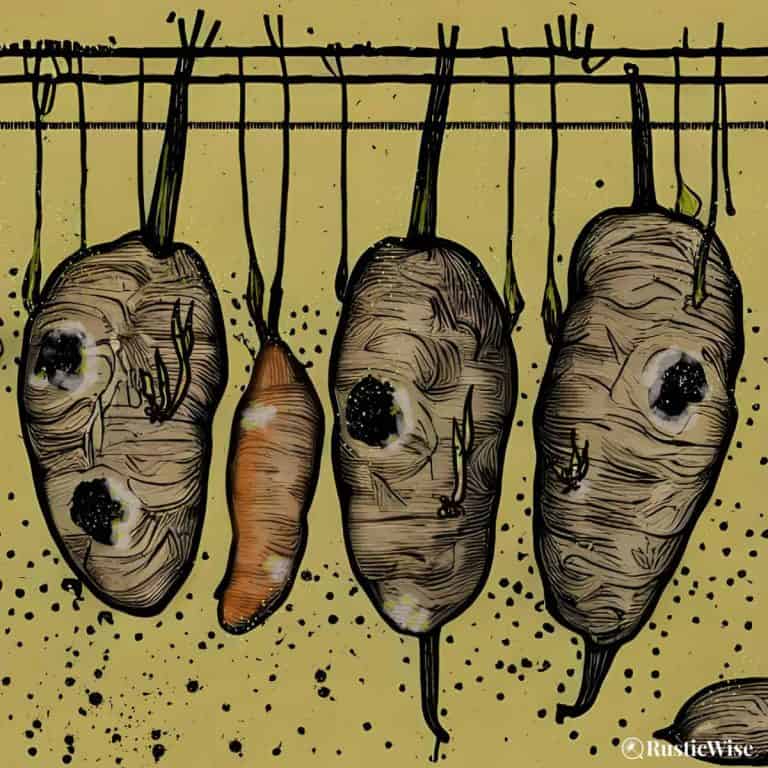How Is Pectin Made? A Guide To Making Your Own Apple Pectin
Making homemade pectin is a great way to preserve your fruits. Pectin is a natural substance found in fruits and is the stuff that makes jams, jellies, and preserves “gel.” So how is pectin made? We’ll show you how to make your own using apples through a process known as pectin extraction. If you’re looking for a way to use up those extra apples you have lying around the yard, homemade pectin can be an economical alternative to store-bought pectin.
Making pectin from scratch is actually pretty simple. If you have a bit of extra time on the weekend, this is a great project. While most people use pectin for homemade jams and jellies, you can also use pectin for firming up jam tarts or pies.
So gather a few supplies and let’s get started!
What is pectin?
For a naturally occurring substance that’s handy in the kitchen for thickening and gelling, pectin is sure underrated.
Pectin is a type of water-soluble complex carbohydrate (polysaccharide). It’s a form of indigestible fiber found in the cell walls of most fruits and vegetables.
As a general rule of thumb, the firmer the fruit, the higher the pectin content. For example, strawberries and raspberries have low pectin, while apples are a good source of pectin.
Fruits that are overripe contain less pectin than the same fruits that are underripe. If you’re making jams and jellies without added pectin, you’ll want to ensure you’re not using overly ripe fruits or risk making a batch of runny jelly.
You can make jams and jellies with or without pectin. Apple jellies for example, can be made without added pectin as apples are naturally packed with pectin. The natural pectin in fruit is released when the fruits are cooked; pectin needs heat to be activated.
Pectin is added to fruits or fruit juices that contain lower levels of pectin to help them “gel.”
Commercial pectin is typically extracted from a combination of apples (or apple pomace) and citrus peels with a bit of dextrose thrown in as a binder. There’s liquid pectin, and there’s also powdered pectin.
Tip: In order to make a good jam or jelly, you need the right combination of pectin, acid (citrus juice), and sugar. For more details on making jam with pectin, check out our post, How Does Pectin Work? How to Make Jam Set.
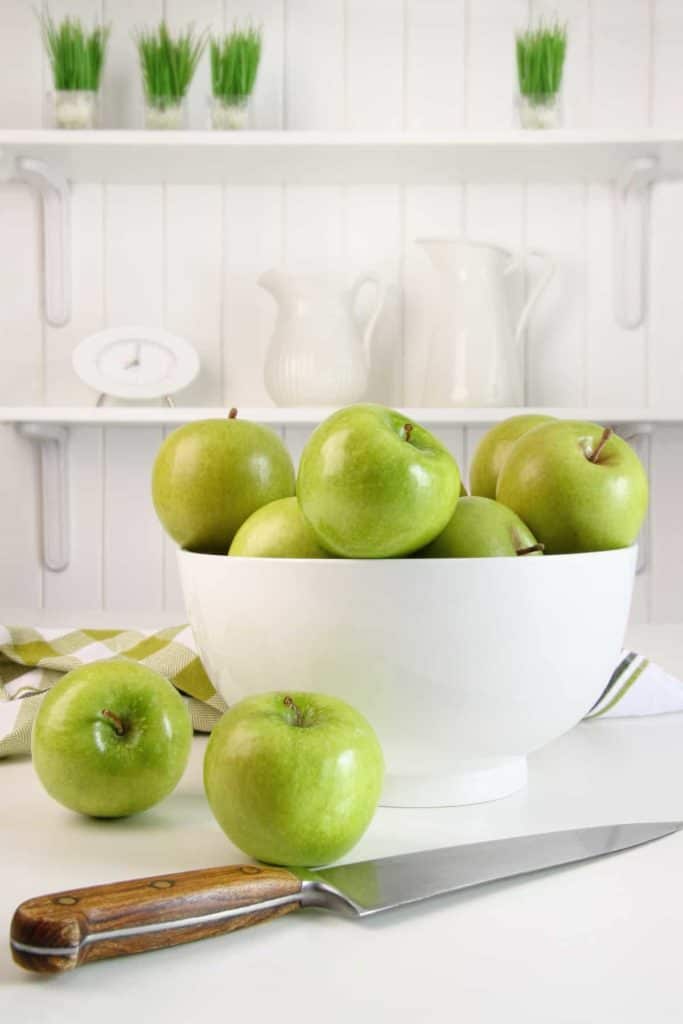
How is pectin made: homemade pectin from apples
I found this recipe for homemade apple pectin from the book, The Encyclopedia of Country Living by Carla Emery. It’s just a treasure trove of useful information if you’re looking for a book to add to your collection.
- You can save the skins and cores of apples from another apple project (applesauce or apple pies!), or use whole apples.
- Use crab apples, green apples such as Granny Smith, or any variety of sour apples that are on the underripe side. Apples that are overripe contain less pectin.
Supplies you’ll need:
- A large stockpot
- Wooden spoon for stirring
- Jelly bag or cheesecloth for straining the liquid
- Colander (for washing apples)
- Cutting board
- Knife
- Sterilized jars (half-pint/8 ounce)
- Large bowl
Ingredients:
- 2 lbs. apples (if you’re using large apples, this would be about six or seven apples). Ensure to include the apple peels and cores as this is where you’ll get the pectin!
- 4 cups of clean water
Yield: Makes roughly 1 1/2 to 2 cups of pectin
- Wash apples and scrub the skins clean.
- Cut the apples into chunks. There’s no need to spend too much time on this step. Remember that pectin comes from the skins and cores of apples so be sure to throw these into the pot.
- Add apples and water to stockpot. Bring to a boil. Reduce heat to medium or medium-high for 45 minutes. Stir occasionally to prevent burning on the bottom.
- Extract the juice by pouring liquid into a jelly bag or a large bowl with a cheesecloth as a strainer. Allow all the liquid to thoroughly drain for at least an hour. For best results, allow mixture to strain overnight.
- Boil the strained pectin for another 15 minutes. During this time, the liquid should be reduced by half. Pour into sterilized jars.
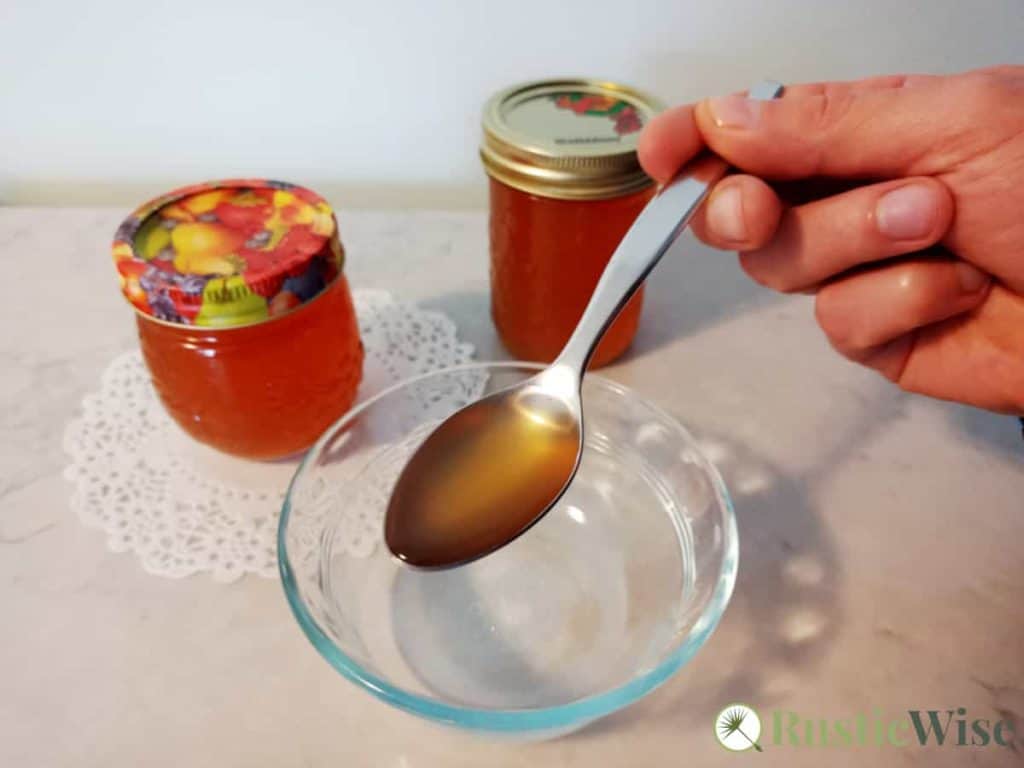
How to store homemade pectin
There are a few different ways you can store your finished pectin. If you’re planning to use it within a week, you can keep it in a sterilized jar in the fridge.
You could also freeze for up to six months.
Or, for long term storage (up to a year), you could can it using a water bath canner:
- Pack in warm jars and leave 1/4″ of headspace. Process for 10 minutes if you live in an area between 0-1,000 feet elevation. If you live in a high-elevation area (above 1,000 feet elevation), you’ll add one extra minute per additional 1,000 feet of elevation.
If you’re new to canning, check out our guide on How To Can Food.
How much pectin should you use to make jam or jelly?
Now, according to the book The Encyclopedia of Country Living here are a few guidelines:
- A general guideline: use 1 cup of homemade apple pectin per 1 cup of low-pectin fruit juice.
- For jellies: use 1 cup of homemade apple pectin per 1 cup of other fruit juice. Add 3/4 cup of sugar per 1 cup of strained liquid.
- For jams: use 1 cup of homemade apple pectin per 1 cup of fruit. Add 3/4 cup of sugar per 1 cup of strained liquid.
Use your homemade pectin to firm up low-pectin fruit jam recipes which use strawberries, raspberries, or peaches.
The old-timer’s pectin test
Using rubbing alcohol, you can perform a quick and easy test to see if your homemade pectin is strong enough to use for making jam and jelly.
Please don’t taste this juice after you’ve combined with rubbing alcohol—it’s not safe to consume!
You’ll need:
- A glass jar and lid
- 1 tablespoon rubbing alcohol
- 1 tablespoon homemade apple pectin juice
Combine apple pectin juice and rubbing alcohol in a glass jar. Swirl to mix. If the apple juice turns into a jelly-like mass, you have enough pectin. If not, this means you’ll need to up the pectin factor.
Related Questions
What fruits are naturally high in pectin?
Here’s a list of a few fruits that contain high levels of pectin:
- Apples of all kinds including crab apples and sour apples
- Lemons
- Currants
- Cranberries
- Loganberries
- Sour plums
- Green gooseberries
- Quince
Is pectin natural or synthetic?
Pectin is a naturally occurring substance found in the cell walls of fruits and some vegetables. It’s used to thicken jam and jelly, and other food products like gummy bears. Even store-bought pectin is derived from natural ingredients (mostly apple pomace and citrus peels that are byproducts from other commercially-produced food products).

Author: Josh Tesolin
Josh is co-founder of RusticWise. When he’s not tinkering in the garden, or fixing something around the house, you can find him working on a vast array of random side projects.

